Rishad Tobaccowala's Blog, page 24
July 18, 2021
The Four Questions: How Will the Future Be?

Photography by Heiko Hellwig
There are four questions that most companies and individuals seek answers to:
The Future: How will the future be?
Change Management: How does one navigate change?
Modern Leadership: How to lead in today’s landscape?
Purposeful Growth: How does one grow/remain relevant?
Every Sunday for the past 48 weeks this letter has shared perspectives on these questions. Over the next four weeks a curated compilation of writing on these topics will be published.
Starting with a focus on the future.

Photography by Heiko Hellwig
Three probabilities about the future.We are all interested in the future since we will be spending the rest of our lives there.
But the future is unknowable since it is yet to unfold.
However, are three very high probabilities about the future that we should heed so that we can better align and adapt to what is likely to occur.
The future will not fit the containers of the past: From organizational structure to how markets are organized, the existing ways of doing business have been optimized on what has come before. The challenge for most of us is to realize that the future refuses to be contained in the containers of the past whether it be media, money, markets, or mindsets.
The future will come from the slime and not the heavens: Future prognosticating is often aligned with crystal ball gazing, scenario planning and blue-sky thinking. We look ahead and above. We watch market leaders and todays visionaries and time after time we are surprised that the future did not come from where we were looking but from those we looked down upon or were outside the “velvet rope” or who never appeared on our radar.
The future while challenging for some is likely to be much better for most: Someone said that they were not afraid of the future, but they were scared out of their minds by the headlines. What enrages powers the algorithms that are built on what engages. While there are real challenges and some segments of society and certain regions fail and slip back, history indicates that for humanity the future can be looked at with optimism.

Photography by Heiko Hellwig
Six Forces driving the futureEverywhere in the world six unstoppable intertwined forces are shifting the very landscape that business and society have been built on.
Multi-polar globalization: Globalization is here to stay but it will be no longer a western centric but a multi-polar form of globalization increasingly with an Asian flavor as China and India continue to rise.
The Three Divides: Every country is dealing with three internal divides of age, ethnicity, and geography. In most advanced economies and China populations are both rapidly aging and also declining, creating new stresses and opportunities. The United States and Europe are dealing with multi-ethnic populations among younger generations that have different values than older generations and every country is seeing a schism between their urban and rural populations in economic outlook, voting patterns and even vaccination uptake.
The Third Connected Age of Technology: Already Society has been greatly impacted by the First Connected Age where we connected to discover (Search) and connected to transact (E-commerce) and the Second Connected Age where we connected to each other (Social) and all the time (Mobile).
We have now entered Third Connected Age where we will enjoy four new types of connections as data connects to data and writes software (AI), and all our devices are connected to Supercomputers (Cloud), with much faster connections (5G) and new interfaces to connect (Voice/AR/VR).
The age we are going to enter will be both magical in what will become available to us as individuals (AI capability is supposedly doubling every 6 months vs the old Moore’s law of 18 months) but challenging on a Society level (anything a machine can do it will do and more and more things will be done by machines)
And with more powerful algorithms which will make today’s sinister newsfeed look childish fueled with the power of facial recognition, will we be entering a utopian or dystopian society or more likely a combination?
A Re-wiring of health, education, and financial industries: In many countries these areas account for over a third of their GDP and are filled with legacy structures and rules which are now being buffeted by a new generation of competitors, new enabling technologies, and a shift in mindsets among regulators and consumers. Even established firms are filled with leaders who understand the challenges and opportunities and the urgency to change and so one will see significant shifts in all these areas.
Climate Change: Denying climate change is like denying gravity. It does not matter what we “think” for just like if we reject gravity, it will not prevent us from becoming a symphony of broken bones and goo if we step out of a multi-storied building to broadcast our “beliefs.” Business and their Boards/ CEO’s take a leadership role on all forms of sustainability. They do this not only because it is the right thing to do but because without it no “Purpose Mantra” rings true and as importantly their customers, and their employees demand it. Big investment firms like Black Rock monitor it.
Second and Third Order Effects of Vaccine Drives: Over the next two years different regions of the world will be vaccinated at different levels. One already sees the impact of differing rates of vaccines determining the outlook for society in the US where the vaccinated rates vary from 15% to 75% depending on the region. Now imagine Africa with only 1% and many Asian and Latin America countries in the single digits. From travel to mutations the second and third order effects of vaccination drives will impact our near term and possible long-term future.

Photography by Heiko Hellwig
The Great Re-invention (The Impact of Covid-19 as an Ongoing Force)Covid-19 has changed the contours of the future in ways that many of us may not be fully comprehending
After nearly eighteen months of fragility, resilience and in some countries resurrection, we are changed as businesses, as society and individuals.
And one would be short sighted in thinking that the key driver of Covid-19 is limited to an acceleration of digital channels and technologies.
It is far deeper.
There will be no new normal or going back but rather a new strange as we think anew for what is ahead as everyone re-thinks their lives, their careers, their leaders and re-evaluates what is important.
The signs are everywhere including the how companies are struggling to attract talent or get them back to the office. It is seen with a Microsoft study that indicates that 40 percent of workers in the USA are thinking of switching jobs.

Photography by Heiko Hellwig
The Transformed Talent TerrainFive forces ricocheting off and re-enforcing each other are sculpting a new terrain.
Demographics: Most countries outside of Africa and the Middle East are aging as people live longer and there is less immigration and fewer children being born. This means more people are going to stay in the workforce longer. In addition, those aged under 34 having grown up in a very different economy (less growth and more shocks), technological (digital natives) and social set up (more liberal and more ethnically diverse) and have very different mindsets and expectations than those over 50 that might be currently leading companies and making up most of Board leadership.
Unbundled Workplace: Post vaccine the office is not dead but it will play a lesser role for a variety of reasons from talent preference to work part of the time from home or near their homes ( a third place that is not home or the old HQ office), a need for companies to either manage costs ( lower real estate costs) or be more aggressive in filling open roles and finding scarce expertise (allowing talent to live wherever they want), Covid-19 has made remote work a reality and very few companies will be able to compete for talent without being open to it.
Technology: While broadband technology, cloud-based computing, and communication software like Zoom and Slack have enabled remote work and collaboration we are on the cusp a quantum jump of enabling technology including integrated AI for improved competency, Voice and Augmented Reality for leaps in communication, and 5G for faster and more resilient connections.
Government and Policy: Most governments are tilting resources to labor and collective infrastructure rather than capital and private enterprise, recognizing that after years of disinvestment in society and poor market driven outcomes in some areas such as climate change the pendulum may have swung too far. It is also clear that company leadership is now being asked to take stands and work with, or influence government.
Culture: After a long while diverse voice and points of view are now both being heard and paid attention to all over the world as for too long too many talented people’s potential was never unleashed or recognized as well as many company cultures needed to be rethought to ensure greater fairness, equality, and opportunity.

Photography by Heiko Hellwig
The Future of WorkThe nature of work: We are all going to be gig workers. The only difference is that the lucky ones will have longer, higher paying gigs with better benefits like a consultant at McKinsey or members of a movie/television crew who come together for as long as the project takes and then the disband and recombine in new ways on the next project. Many others will be working for Uber, Door Dash or on contract for tech and other companies (Google has many more contract workers than full time employees already and the divergence is growing). This change will be driven by employees wanting flexibility, companies wanting to make costs variable versus fixed, enabling technologies that allow for distributed and fractional work, as well as the shrinking half-life of skills that place a premium on plug and play work forces.
How work is done: Almost all work will be instrumented and technologically augmented. Today everything is measured including page views and interactions with each piece written by an online writer, time spent answering a tele-marketing call or billable time spent by doctors in seeing patients or lawyers in seeing Clients. If there is an emission of data it will be used to stack, compare, enhance, iterate, and improve.
Where work is done: The ‘office” of 2019 will become like a typewriter did three decades ago in the age of computers and Microsoft Office. A collectible and a romantic notion of a time past. Or movie theater chains believing that people will flock back to their locations to see movies at the same frequency as before despite every blockbuster being available at home the same day as part of subscription service

Photography by Heiko Hellwig
Ruptures in the MediascapeEvery decade or so there are significant shifts in the media landscape.
In the early 80’s we saw the birth of cable, the 90’s the beginning of the World Wide Web, less than a generation ago we witnessed the explosion in social media and the criticality of mobile phones as revolutionary creation, consumption, and distribution platforms/instruments.
We are now amid what maybe the most significant rupture in the mediascape whose implications on business and society are only beginning to be sensed. A rupture that is not just driven by advances in technology but a very deep wrinkle in the very fabric of every element of how media, messaging, content, information are created, designed, distributed, consumed, shared, and trusted.
Media is becoming mongrelized as the difference between offline and online media, above the line and below the line communication and audio/video/word blur. Even more importantly the differences between social, mobile, search and e-commerce make very little sense and yet so many organizations are set up this way. A shoppable mobile video with chat support belongs to which part of a marketer’s organization?
In addition to mongrel media another key change is determining who is a creator and what is a media company? In the United States nearly 50 million people define themselves as creators and Kylie Jenner’s Instagram gets more traffic than the Super Bowl and Oscars combined.
Add to this the rise of Voice (Amazon Echo, Google Home, Podcasting, Clubhouse), the emergence of Augmented Reality and Virtual Reality and the renaissance of Out of Home as an electronic wired interactive media one can sense the entire media landscape is ready to rupture.
Here are links to posts on the Future. (Each a 6-minute read covering an area touched on above in greater detail)
The Future: https://rishad.substack.com/p/the-future
The River of Change: https://rishad.substack.com/p/a-river-of-change
The Great Re-Invention (Covid Impact): https://rishad.substack.com/p/the-great-re-invention
The Transformed Talent Terrain: https://rishad.substack.com/p/the-transformed-talent-terrain
The Future of Work: https://rishad.substack.com/p/the-future-of-work
Ruptures in the Mediascape: https://rishad.substack.com/p/ruptures-in-the-mediascape
Next week we address the second of the four questions is which is how do companies, teams and people navigate these changes?
Four Questions: How Will the Future Be?

Photography by Heiko Hellwig
There are four questions that most companies and individuals seek answers to:
The Future: How will the future be?
Change Management: How does one navigate change?
Modern Leadership: How to lead in today’s landscape?
Purposeful Growth: How does one grow/remain relevant?
Every Sunday for the past 48 weeks this letter has shared perspectives on these questions. Over the next four weeks a curated compilation of writing on these topics will be published.
Starting with a focus on the future.

Photography by Heiko Hellwig
Three probabilities about the future.We are all interested in the future since we will be spending the rest of our lives there.
But the future is unknowable since it is yet to unfold.
However, are three very high probabilities about the future that we should heed so that we can better align and adapt to what is likely to occur.
The future will not fit the containers of the past: From organizational structure to how markets are organized, the existing ways of doing business have been optimized on what has come before. The challenge for most of us is to realize that the future refuses to be contained in the containers of the past whether it be media, money, markets, or mindsets.
The future will come from the slime and not the heavens: Future prognosticating is often aligned with crystal ball gazing, scenario planning and blue-sky thinking. We look ahead and above. We watch market leaders and todays visionaries and time after time we are surprised that the future did not come from where we were looking but from those we looked down upon or were outside the “velvet rope” or who never appeared on our radar.
The future while challenging for some is likely to be much better for most: Someone said that they were not afraid of the future, but they were scared out of their minds by the headlines. What enrages powers the algorithms that are built on what engages. While there are real challenges and some segments of society and certain regions fail and slip back, history indicates that for humanity the future can be looked at with optimism.

Photography by Heiko Hellwig
Six Forces driving the futureEverywhere in the world six unstoppable intertwined forces are shifting the very landscape that business and society have been built on.
Multi-polar globalization: Globalization is here to stay but it will be no longer a western centric but a multi-polar form of globalization increasingly with an Asian flavor as China and India continue to rise.
The Three Divides: Every country is dealing with three internal divides of age, ethnicity, and geography. In most advanced economies and China populations are both rapidly aging and also declining, creating new stresses and opportunities. The United States and Europe are dealing with multi-ethnic populations among younger generations that have different values than older generations and every country is seeing a schism between their urban and rural populations in economic outlook, voting patterns and even vaccination uptake.
The Third Connected Age of Technology: Already Society has been greatly impacted by the First Connected Age where we connected to discover (Search) and connected to transact (E-commerce) and the Second Connected Age where we connected to each other (Social) and all the time (Mobile).
We have now entered Third Connected Age where we will enjoy four new types of connections as data connects to data and writes software (AI), and all our devices are connected to Supercomputers (Cloud), with much faster connections (5G) and new interfaces to connect (Voice/AR/VR).
The age we are going to enter will be both magical in what will become available to us as individuals (AI capability is supposedly doubling every 6 months vs the old Moore’s law of 18 months) but challenging on a Society level (anything a machine can do it will do and more and more things will be done by machines)
And with more powerful algorithms which will make today’s sinister newsfeed look childish fueled with the power of facial recognition, will we be entering a utopian or dystopian society or more likely a combination?
A Re-wiring of health, education, and financial industries: In many countries these areas account for over a third of their GDP and are filled with legacy structures and rules which are now being buffeted by a new generation of competitors, new enabling technologies, and a shift in mindsets among regulators and consumers. Even established firms are filled with leaders who understand the challenges and opportunities and the urgency to change and so one will see significant shifts in all these areas.
Climate Change: Denying climate change is like denying gravity. It does not matter what we “think” for just like if we reject gravity, it will not prevent us from becoming a symphony of broken bones and goo if we step out of a multi-storied building to broadcast our “beliefs.” Business and their Boards/ CEO’s take a leadership role on all forms of sustainability. They do this not only because it is the right thing to do but because without it no “Purpose Mantra” rings true and as importantly their customers, and their employees demand it. Big investment firms like Black Rock monitor it.
Second and Third Order Effects of Vaccine Drives: Over the next two years different regions of the world will be vaccinated at different levels. One already sees the impact of differing rates of vaccines determining the outlook for society in the US where the vaccinated rates vary from 15% to 75% depending on the region. Now imagine Africa with only 1% and many Asian and Latin America countries in the single digits. From travel to mutations the second and third order effects of vaccination drives will impact our near term and possible long-term future.

Photography by Heiko Hellwig
The Great Re-invention (The Impact of Covid-19 as an Ongoing Force)Covid-19 has changed the contours of the future in ways that many of us may not be fully comprehending
After nearly eighteen months of fragility, resilience and in some countries resurrection, we are changed as businesses, as society and individuals.
And one would be short sighted in thinking that the key driver of Covid-19 is limited to an acceleration of digital channels and technologies.
It is far deeper.
There will be no new normal or going back but rather a new strange as we think anew for what is ahead as everyone re-thinks their lives, their careers, their leaders and re-evaluates what is important.
The signs are everywhere including the how companies are struggling to attract talent or get them back to the office. It is seen with a Microsoft study that indicates that 40 percent of workers in the USA are thinking of switching jobs.

Photography by Heiko Hellwig
The Transformed Talent TerrainFive forces ricocheting off and re-enforcing each other are sculpting a new terrain.
Demographics: Most countries outside of Africa and the Middle East are aging as people live longer and there is less immigration and fewer children being born. This means more people are going to stay in the workforce longer. In addition, those aged under 34 having grown up in a very different economy (less growth and more shocks), technological (digital natives) and social set up (more liberal and more ethnically diverse) and have very different mindsets and expectations than those over 50 that might be currently leading companies and making up most of Board leadership.
Unbundled Workplace: Post vaccine the office is not dead but it will play a lesser role for a variety of reasons from talent preference to work part of the time from home or near their homes ( a third place that is not home or the old HQ office), a need for companies to either manage costs ( lower real estate costs) or be more aggressive in filling open roles and finding scarce expertise (allowing talent to live wherever they want), Covid-19 has made remote work a reality and very few companies will be able to compete for talent without being open to it.
Technology: While broadband technology, cloud-based computing, and communication software like Zoom and Slack have enabled remote work and collaboration we are on the cusp a quantum jump of enabling technology including integrated AI for improved competency, Voice and Augmented Reality for leaps in communication, and 5G for faster and more resilient connections.
Government and Policy: Most governments are tilting resources to labor and collective infrastructure rather than capital and private enterprise, recognizing that after years of disinvestment in society and poor market driven outcomes in some areas such as climate change the pendulum may have swung too far. It is also clear that company leadership is now being asked to take stands and work with, or influence government.
Culture: After a long while diverse voice and points of view are now both being heard and paid attention to all over the world as for too long too many talented people’s potential was never unleashed or recognized as well as many company cultures needed to be rethought to ensure greater fairness, equality, and opportunity.

Photography by Heiko Hellwig
The Future of WorkThe nature of work: We are all going to be gig workers. The only difference is that the lucky ones will have longer, higher paying gigs with better benefits like a consultant at McKinsey or members of a movie/television crew who come together for as long as the project takes and then the disband and recombine in new ways on the next project. Many others will be working for Uber, Door Dash or on contract for tech and other companies (Google has many more contract workers than full time employees already and the divergence is growing). This change will be driven by employees wanting flexibility, companies wanting to make costs variable versus fixed, enabling technologies that allow for distributed and fractional work, as well as the shrinking half-life of skills that place a premium on plug and play work forces.
How work is done: Almost all work will be instrumented and technologically augmented. Today everything is measured including page views and interactions with each piece written by an online writer, time spent answering a tele-marketing call or billable time spent by doctors in seeing patients or lawyers in seeing Clients. If there is an emission of data it will be used to stack, compare, enhance, iterate, and improve.
Where work is done: The ‘office” of 2019 will become like a typewriter did three decades ago in the age of computers and Microsoft Office. A collectible and a romantic notion of a time past. Or movie theater chains believing that people will flock back to their locations to see movies at the same frequency as before despite every blockbuster being available at home the same day as part of subscription service

Photography by Heiko Hellwig
Ruptures in the MediascapeEvery decade or so there are significant shifts in the media landscape.
In the early 80’s we saw the birth of cable, the 90’s the beginning of the World Wide Web, less than a generation ago we witnessed the explosion in social media and the criticality of mobile phones as revolutionary creation, consumption, and distribution platforms/instruments.
We are now amid what maybe the most significant rupture in the mediascape whose implications on business and society are only beginning to be sensed. A rupture that is not just driven by advances in technology but a very deep wrinkle in the very fabric of every element of how media, messaging, content, information are created, designed, distributed, consumed, shared, and trusted.
Media is becoming mongrelized as the difference between offline and online media, above the line and below the line communication and audio/video/word blur. Even more importantly the differences between social, mobile, search and e-commerce make very little sense and yet so many organizations are set up this way. A shoppable mobile video with chat support belongs to which part of a marketer’s organization?
In addition to mongrel media another key change is determining who is a creator and what is a media company? In the United States nearly 50 million people define themselves as creators and Kylie Jenner’s Instagram gets more traffic than the Super Bowl and Oscars combined.
Add to this the rise of Voice (Amazon Echo, Google Home, Podcasting, Clubhouse), the emergence of Augmented Reality and Virtual Reality and the renaissance of Out of Home as an electronic wired interactive media one can sense the entire media landscape is ready to rupture.
Here are links to posts on the Future. (Each a 6-minute read covering an area touched on above in greater detail)
The Future: https://rishad.substack.com/p/the-future
The River of Change: https://rishad.substack.com/p/a-river-of-change
The Great Re-Invention (Covid Impact): https://rishad.substack.com/p/the-great-re-invention
The Transformed Talent Terrain: https://rishad.substack.com/p/the-transformed-talent-terrain
The Future of Work: https://rishad.substack.com/p/the-future-of-work
Ruptures in the Mediascape: https://rishad.substack.com/p/ruptures-in-the-mediascape
Next week we address the second of the four questions is which is how do companies, teams and people navigate these changes?
July 11, 2021
Privacy Matters.

Photograph from the CF Gallery Australia.
Over the next few years privacy will grow increasingly more important than it is already.
Matters around privacy will become central to every society, business and country and the way these different establishments handle privacy will drive everything from brand value, market capitalization, economic output, and the happiness of citizens.
Why Privacy is important.In 2014 at a TED Global Conference in Rio de Janeiro, Brazil, the journalist Glenn Greenwald gave one of the finest talks on why privacy is important.
It is a must watch.
Privacy is important because we are not who we are when somebody is watching…
When someone negatively impacts our privacy, they might prevent us from being ourselves.
In a quest to identify and put us in a box they may impact the very identity they are trying to understand.

Photograph from the CF Gallery Australia.
Privacy and Life Operating System (LoS).Privacy has been an issue for a long time. It started to become more central to everyday life in the First Connected Age which began in 1993 with the launch of the World Wide Web and the rise of Search Engine Marketing and E-Commerce.
But it was really in 2007 with the beginning of the Second Connected Age where everybody was connected all the time (mobile) and everybody was connected to everybody (social) that the volume, speed and granularity of data exploded exponentially. The primary monetization engine of the First and Second Connected age was advertising and the ability to leverage data for marketing purposes made the underlying data structure an Advertising Operating System (AoS).
But as the 2016 elections in the US, Brexit and much more have shown the You-Tube’s, Facebook’s and Twitters of the world had unleashed a targeting and content delivery system so powerful that they were used to not just sell soap but determine elections, drive enraged crowds, and impact society.
What began as an Advertising Operating System to sell product is really a Society Operating System (SoS)and brings with it powerful positive and negative forces that impact society. Data collected to sell goods and services drives politics, promotes magical thinking, and can kill people through the promotion of bad science.
And we have not seen anything yet as we enter the Third Connected Age.
In the Third Connected Age the centrality of data will grow more important as a) data connects to data via machine learning and even more powerful algorithms, b) data drives an Internet of Things driven by 5G, c) we connect with devices and data in new ways from voice to augmented reality and d) everything is driven by cloud-based quantum computing.
As data, connections and algorithms permeate our financial and health records, connect our automobiles and homes to navigation systems and electricity grids, and mark our place and identity in the matrix of life we will be embedded in a Life Operating System (LoS).
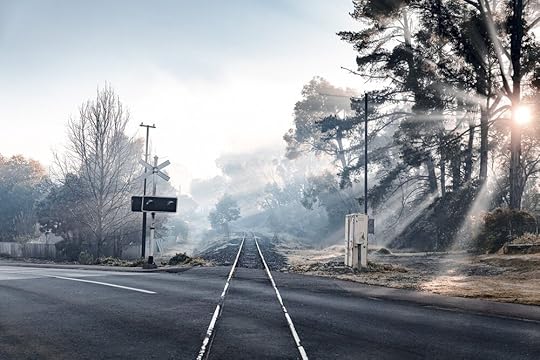
Photograph from the CF Gallery Australia.
Privacy as business strategy.There are many reasons that Apple may be emphasizing privacy to sell its products and ecosystems. On one hand it helps them curb the advertising business of Android Operating System creator Google (though they also accept billions from Google to make its search engine the default engine on Apple products), or it could be a personal animosity between Tim Cook and Mark Zuckerberg, or a recognition that its highly desired and expensive products are bought by people who do not need an advertising subsidy to afford the products and services.
Apple also recognizes that a focus on privacy earns them the trust necessary to continue to integrate their products and services into a wider spectrum of our lives. MacOS and iOS will continue to blend and merge into one flavor of Life Operating System as Apple technology continues to embed into larger parts of their customers lives. The Apple Watch is a foray into health. Apple Pay and Apple Card into finance. The HomePod and Apple TV will integrate along with the iPhone and other devices into our homes. Apple AirPods are in our ears and soon Apple Augmented Reality devices will be over our eyes. All this before the much rumored and anticipate iCar!
Apple faces its own privacy challenge due to its dependence on China for most of its manufacturing and a significant portion of its sales. They cannot be as stringent about about the privacy of Chinese citizens if they wish to remain on the right side of the government of that country.
So, Apple will continue to a) increasingly focus on services and not just hardware, b) move manufacturing into other countries (India among others), c) create new products that are not manufactured in China and d) overcompensate on privacy outside of China to offset the challenges there.
Amazon who’s next trillion will be driven in part by health care has built the third largest advertising business after Google and Facebook with what appears to be a far more consumer/customer driven approach to privacy recognizing that its next frontiers require trust.
Google has temporarily dialed back some of its decisions to make its browser and ad operating system more privacy friendly, but they will continue in this direction.
While we are living in a platform age, every business and not just the major platforms will grapple between privacy and their need to identify and build relationships with their customers.
Because privacy is at its heart about trust.
And brands, leaders, and companies cannot thrive in the medium to long run without trust.
Trust is the currency that has most receded in current times as measured by the Edelman Trust Barometer.
As we all begin to be enveloped in a matrix of personalized devices and experiences it will be clear that privacy will be key, and every major company and media organization will need to think and plan deeply on privacy.

Photograph from the CF Gallery Australia.
Privacy is more than data.A company’s approach to privacy will mark its reputation, its Brands, and its management.
Privacy declarations will be even more comprehensive than today’s documents that inundate us on how and when our data will be shared and used.
Because privacy will be far more than a data policy.
We will see Privacy become a key part of a company’s ESG (Environment Social Governance) reports and be knitted into Values and Mission statements. The culture of places will be impacted by how they deal with not just the privacy of their customers but also their employees.

Photograph from the CF Gallery Australia.
The private, the personal, data and true understanding.David Orr is a poetry critic for the New York Times who a few years ago wrote a book called “Beautiful and Pointless”. In the opening chapter titled “the personal” he seeks to show how “private” and “personal” are two very different things.David provides a list of sentences:
Bob Smith was born on November 9, 1971.
Bob Smith’s favorite password is “nutmeg456”
Bob Smith’s Social Security number is 987-65-4320
Bob Smith has a foot fetish.
As a child, Bob Smith had an imaginary friend named Mr. Pigwort.
Whenever Bob Smith hears a high wind, it makes him think of his wife, who died ten years earlier, and he hears her voice faintly calling, as if from a great distance.
He notes that the first three sentences contain deeply private information, but they don’t seem personal like the last three.
Mr. Orr then states:
“ The point here is that our conception of “the personal” has to do more than the data of our lives, no matter how sensitive. It has to do with how we see ourselves, how we see others, how we imagine others see us, how they actually see us, and the potential embarrassment, joy, and shame that occur at the intersection of these different perspectives”
In an age obsessed with data we often believe that data can explain, and data can convince.
To a point it might, but we should never forget that meaning lies within us and combines emotion and rational thinking.
We often barely know ourselves and can be two different people in two different moods.
Because we choose with our hearts and use numbers to justify what we just did.
And we need space and privacy to be who we are.
July 4, 2021
Roots/Wings.

Art by Bisa Butler
To succeed as an individual or as a firm one must have roots and wings.
Roots provide stability, a place to stand, a passed along tradition and a sense of history.
But roots alone which are important to ensure one does not get blown away by the winds of change might anchor one too much to the past and to a status quo which may no longer be relevant.
Thus, the importance of wings.
The ability to raise oneself and see above the horizon, to look down with new perspectives and to ensure that the roots which feed us do not wither by failing to adapt to a new world.
Roots nourish via what we were and where we came from and what we did.
Wings encourage us to go where we need to and to blaze new trails which will lay down tomorrows roots and are a highway to what we will accomplish.

Art by Bisa Butler
Why roots are critical.We are stories.
Whether we are individuals or companies.
We all have beginnings.
Origin stories either real or concocted.
Once upon a time.
Day one.
In the beginning.
This past for companies creates rituals, motivational stories, moments of crisis, provenance, proof, and a reason to believe. Tales that encrust every key financial event like barnacles. The almost went out of business moments, the eureka breakthrough moments, the IPO moment, or the key acquisition.
As time passes, people move on, and locations change the stories linger often shape shifting with the passage of time, with who the story teller is , and the quality of the telling.
Remembered history may not be history but in it is rooted much.
Roots are critical for not just companies but individuals.
Personal roots shaped by the people and places we grew up, first losses, loves, jobs and mentors, help make us what we are. Then key decisions and roads taken or not taken that bring us to the present. We plumb, narrate, garnish, and embellish these roots to explain why and where we are today.
The tattoo moments that we wear as invisible scars or badges that nobody sees but that mark our days.
People, skills, relationships are forged and become part of our roots.
Reputations, brands, trust, and networks are built by time and help us navigate the sway of change by keeping us rooted to what matters, disciplined in skills, protected by a trampoline of earned trust.
Over the years we are forged in the foundry and furnace of experiences that enable us to become the force we are. This enables faster action and movement than the uninitiated since what others must learn comes as second nature.
Roots matter in relationships, in honing of skills and much more.
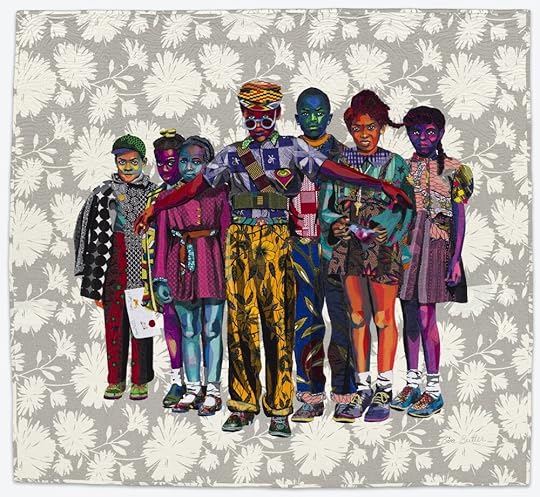
Art by Bisa Butler
The magic of wings.While every individual and firm start somewhere, every life and firm are also a journey.
Just as a tree that begins with a seed initiating a root, many of us are lucky to be nourished by the water and light of life provided by families, school, and friends to reach upward and branch out.
We take wings.
Wings are fueled by dreams. By crossing the horizon to go where no one has gone before. To do the unimaginable and the impossible.
It is the fuel that drives not just entrepreneurs but all of us who take a risk, switch careers, leave a city or country to go to another. It fuels immigrants who leave with nothing but a dream for a better life. Wings beat and provide the wind for artists who start with a blank sheet of paper, a piece of rock, an empty space which they convert into stories, songs, plays, paintings, movies, sculpture and more.
While the roots, the status quo, and the ground below us are all real we often take wing to the unseeable, the unknowable.
We take a leap into the void that sometimes results in innovation, creativity, the un-status quo when we land.
Every individual has wings.
It is just a question of when and if we get the chance to use them.

Art by Bisa Butler
Combining roots and wings.If every individual and company is a story with a place we came from, every individual and a firm is also about a place we are going to.
We all integrate the dualities of roots and wings.
Too rooted and we may wither way as changing times and climate bring drought to the place and way we were.
To winged and we may be blown away in the gusts of change.
Too rooted and we may be seen as old school, hide bound to tradition and inflexible.
Too ready to fly with change may find us painted as unreliable, undisciplined, and short-term oriented.
Transformation is twisting ourselves and companies into new shapes with the clay of what we were and new skills and pieces we acquire.
To believe and better understand where you are going people want to know from where you are coming.
If you wish to record a new track it helps, especially once you are no longer a beginner, to have a track record.
So next time ask yourself, your friends or your company or the companies you wish to partner with:
a) What are the tattoo moments that made you what you are?
b) What do you believe is key from the past to your future and what should you be willing to or need to leave behind?
c) Where are you going and what do you believe about tomorrow?
d) What leaps of faith or acts of courage are you going to take to get there?
And many of us will get to where we are going.
This is because we got where we are today by continuously integrating, balancing, and unifying yesterday and tomorrow, safety and risk and what we are/were and what we want to be.
We are a mix of roots and wings…
June 27, 2021
On Feedback
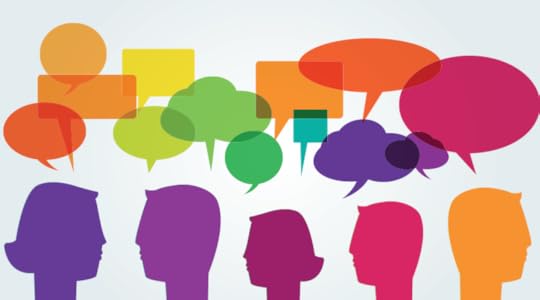
To grow one needs to continuously improve.
A key ingredient to improvement is feedback.
Feedback however is both difficult to give and receive.
Feedback challenges are even more pronounced these days due to three factors:
a. Covid: an increasingly sensitive workforce emerging from a year of Covid-19 driven challenges with heightened emotions and changed mindsets.
b. DEI: a concern that criticism may be taken as a form of insensitivity or discrimination as companies rightly focus on ensuring Diversity, Inclusion and Equality.
c. Polarization: a polarized social and political environment.
 The six steps to giving better feedback.
The six steps to giving better feedback.Best practices suggest that there are six approaches that can help people give and accept feedback in ways that recognize these and other realities.
Focus on how the task or the process could have been improved rather than criticize the person: By focusing on how an assignment could be done better the emphasis is in on the product and not the person.
Compare the shortfalls to a higher standard that might have been met on another project or another time: By recalling assignments or times where the individual or team did a great job, one re-enforces to the person or team that they are capable of having done better. The emphasis is on what was less than ideal on this occasion versus rather than believing the individual or team is incapable of doing a good job.
Make yourself sensitive and aware of extenuating circumstances: We all have bad days and many times these are a result of something else distracting us or worrying us in our lives. It may be illness, family issues or other challenges. By empathizing with an individual via wondering if there is a reason quality has slipped indicates both concern and humanity.
Provide input as specific as possible as to what could be done better: Pointing out what went wrong or was less than optimal is only one half of feedback. The more important half is showing or teaching or guiding on how one can improve. Identify either steps or training or changes that need to be made.
Identify the next opportunity or project for a do-over or try another take: By showing both how one can improve and then identifying an upcoming opportunity to put the feedback to work concentrates the mind and channels emotions to action and the possibility of correcting the shortfall.
Provide personal help and perspective: If feedback is provided in the context of what others have struggled with over the years or what you may have learned and improved it lets people know that mistakes, mess-ups, and other shortfalls are par for the course in career growth. By also asking how you can help re-enforces that you are on the persons side and are committed to try to make them improve.
 The importance of holding ourselves accountable to getting feedback.
The importance of holding ourselves accountable to getting feedback.If we do not get continuous feedback, we begin to lose our edge and slowly wither into mediocrity.
But for a variety of reasons including those discussed earlier (Covid, DEI and polarization) but also because we may be too senior or too powerful and therefore either believe we do not need it or people are afraid to offer it to us many of us may not get feedback unless we actively solicit, listen and are sensitive to nuances and signals.
We should all be concerned if we do not get feedback of some sort because it may mean we a) don’t really matter, b) are being put out to pasture, c) are considered too difficult or prickly to deal with or d) have a reputation as bullies who punish anyone pointing out faults.
 Three ways of ensuring one is getting feedback
Three ways of ensuring one is getting feedbackScan for signals: People are constantly providing feedback even if they are not vocalizing it. In some instances, you may gauge it in numerical signals from how well your writing is read, reacted to, or shared or whether you are invited to key meetings. Other times it is to watch facial and body language. You learn a lot by reading a room or a Zoom gallery.
Ask for feedback on a regular basis: One can do this with three simple questions which by the way they are framed ensure people are comfortable helping you since they are positive in tone:
a. What worked well?
b. If/when I do this next time what could be better?
c. Who do you think does what I need to do well and where can I learn more?
End of Day or Week Self Review: Most people know in their gut what worked or went well and what did not. Many successful individuals end the day or week with some variation of a quick review :
a. The Work: What went well with my work product that I feel proud signing it and what could have gone better.
b. The Team: What felt good and productive in the way I interacted with people and where could I have been better in some ways in handling my or someone else’s emotions.
c. The Improvement: What little improvement did I manage to make today or this week? A new habit. Learning a new approach. Strengthening a relationship.
 Compound Improvement
Compound ImprovementOne improves slowly over time.
Some days one improves and other days there are setbacks that one learns from. A practice of continuous improvement is what drives not just success for athletes but for all people.
The day we stop learning we stop growing and we begin dying.
By being accountable for our own feedback and by being comfortable helping others with feedback to unleash their growth is a sign of not just successful businesspeople but people who find success in every component of life.
Happiness is not necessarily where you start but how you get better and where you are going.
Feedback is a key to growth and the journey forward.
June 20, 2021
Two To Transform: Embrace Tech. Upgrade Talent.

Creative photography by Anna Devis and Daniel Rueda
A river of change is carrying everybody and every company into the future. Six significant forces are sculpting the frontiers of tomorrow.
While there is a great complexity to be dealt with to ensure a profitable and successful tomorrow, there are only two key drivers that matter. These are ones we should focus on and not be distracted by a cacophony of distracting headlines or consultants offering complexifying choices.
Get these two more or less right and you and your firm should thrive.
Tech Alignment: Understand how technology is a) changing people and their behavior and b) how it is re-configuring your products, services, and experiences by either enabling new competitors, re-defining value, eroding or creating competitive advantage or radically transforming economics.
Upgrade Talent: Given the right resources (tech alignment) the firm with a disproportionate share of talent passionately aligned towards a common outcome is likely to win. It is true in sports, and it is true in business.
These are the two key drivers, and BOTH are required at the same time. Fantastic silicon (tech) with mediocre carbon (human talent) or vice versa are unlikely to succeed.
Every Board of Directors or Leadership Confab should not begin meetings with financial updates, product updates, M&A updates but rather a) a Tech Terrain detailing a threat and opportunity matrix and how the company is preparing and making progress in ensuring competitiveness and b) a Talent Capital X-Ray which should include not just attrition and retention measures but also employee joy, educational investments, culture health checks, and much more.
Talented people in a good culture with enabling technology are what create happy customers, innovation, differentiation, revenue growth and profits.

Creative photography by Anna Devis and Daniel Rueda
Embrace tech by recognizing your company is a tech company.Today every company is a tech company.
If a decade ago one had invested in Domino’s, Apple, Facebook, or Google one would have got a better return on investment with Dominos!
Yes, Domino’s makes pizza and delivers it to a person’s home, but they leveraged technology to re-imagine and then transform every single aspect of their business from how customers could order the pizza, monitor its journey , decide where to receive it (at the football field as you tailgated?) and how it was delivered to them (drone anyone?)
They re-imagined stores, understood how delivery services could become parasites eating into their margin while trying to control customer relationships. Domino’s controls every aspect of the customer relationship and delivery.
They understood technology could re-define their future and was their business. They understood that the challenges and changes it brings about cannot be stopped and needs to be embraced.
To read more about Dominos or see a video of its transformation check this: https://producthabits.com/dominos-pizza-drove-90x-increase-stock-value-acting-like-tech-startup/
Creativity is where art and technology intersect so if you are in a creative business, you are in a technology business. Communication changes as technology changes and if you do not adapt (most newspapers for instance were done in by the failure of their management to recognize the impact of technology and not technology itself) your media business may not thrive in the future. Marketing is about understanding and meeting customer requirements and as customers’ requirements, expectations, and behaviors as well as the communication channels change every aspect of marketing becomes a technology infused business.
Smart companies and leaders recognize the critical nature of technology and realize an understanding of its potential should be throbbing in the beating blood of every key employee. Technology implementation may be led by the CTO and CIO but understanding of its impact and a vision about how to leverage it, must reside in every leader and should be central to every aspect of product, service, and experience design.

Creative photography by Anna Devis and Daniel Rueda
Prepare for the Third Connected Age of Tech.While technology and online has been around for a long while, there was a step change in how businesses were impacted beginning in 1993 with the launch of the First Connected Age marked by the creation of the World Wide Web by Tim Berners-Lee.
During this first connected age people connected to discover and people connected to shop. The companies that created the best products and services in these areas like Google and Amazon became the most valuable companies in the world.
Search and E-commerce transformed many aspects of business.In 2007 we entered the Second Connected Age which built on the first age as technology now allowed people to connect with each other (social networks) and connect all the time (smart phones). Not surprisingly Facebook and Apple were also big winners and are among the most valuable companies.
Mobile and Social continued this transformation of business but also transformed many aspects of society. The challenge society faces is that many of the modern communication channels were built to optimize for consumers and an advertising operating system but now they are a society operating system and we need to optimize for citizens.
We have now entered the Third Connected Age of Technology ( its dawn was first heralded five and a half year ago) and it will make all the seismic changes of the last three decades pale in significance. This is because not only does this age build on the foundations of what has come before due to advances in technology but also three decades of people’s changing behavior and expectations. Almost every millennial was born after the dawn of the first connected age and the modern graphical internet.
The Third Connected Age will see four new connections.
a) AI: Data connecting to data which is a simplistic way of describing machine learning
b) 5G: Much faster and more resilient connections
c) Voice/AR/VR: New ways of connecting. In many countries voice search is greater than text search.
d) Quantum Computing: Connections to the New God in the Sky as cloud-based computing takes a quantum jump.
Today a toddler version of these capabilities bundled together are available via Amazon Echo and Google Home. Anticipate in less than 1000 days the transformative potential of these technologies will create a plethora of new winners and losers across every Industry.
Do you have your best talent in your company working to ensure Third Connected Era readiness?
Creative photography by Anna Devis and Daniel Rueda
Upgrade talent.
Talent is all.
People are key.
A company only transforms if the people in the company transform. A company gets better when the people in the company get better.
Technology smarts and modern technology are necessary but not sufficient to succeed.
People/Talent are the key to win.
If one reads Will and Ariel Durant’s “ The Lessons of History” it becomes clear that every advance in technology places a premium on superior talent.
Basically, technology is like a lever. It allows talent leverage and scale. It is never technology or talent. It is technology and talent.
Great people with great tools will dominate all.
Today we are living in a truly transformed terrain for talent. One where every aspect of what talent wants from companies and their bosses, the nature of work and much more are being twisted into new shapes.
Smart companies are realizing that the next few years will be driven by how they can upgrade their talent through a combination of recruiting new talent as well as training and inspiring existing talent
Today smart leaders everywhere recognize we are at a unique moment in time due to the combined impact of Three Big Shifts : a) Importance of Diversity, Equality and Inclusion, b) Role of ESG, Purpose and Values in a company culture and c) The unbundled workplace and new life mindsets post Covid .
This is the ideal time for leaders to truly re-think their talent strategy, company culture and training plans to attract and upgrade people.

Creative photography by Anna Devis and Daniel Rueda
Talent=Growth.Companies want to grow.
But so does talent.
And if talent grows the company grows.
There are six types of growth people want and every company must offer some combination of all six though they will be mixed in different ways for every individual, role, and where the person is in their career journey. A key is to think with tomorrow in mind.
a) Compensation: Talent wishes to be paid fairly and to see their total compensation increase as their impact and skill sets and contributions grow. Companies must compensate for where they want future behaviors and growth to be rather than reward people for today while talking about tomorrow. People will follow the money.
b) Recognition: Every individual wants to be recognized for their work. They want to work for bosses who allow them to shine.
c) Autonomy: One cannot learn and grow if every step is micro-managed. If one is rooted in process and routine, how can one spread one’s wings and navigate the winds of change?
d) Skills: Today the half-life of many technical skill and some soft skills erode and need to continuously be re-built. Companies must invest deeply in continuous education. Talent will thrive if they are being taught skills that increase their market value in tomorrows marketplace. Yes, increase the number of people who want to recruit away your talent. This retains talent and attracts new talent.
e) Purpose: Critical factor in joining and staying in a company is a growing belief in the purpose and value of a company.
f) Relationships/connections: Growing a network of mentors, colleagues and others over time is a key to career success and happiness.
Few jobs and companies allow for every one of these six growth factors at the same time, but few companies can attract and retain talent if they do not offer many of these growth enablers.
Today we are at a particular junction where a fusion between a new era of technology (The Third Connected Age) and a new talent mindset is underway. To grow and thrive we will need to grow our understanding of the implications of technology on our business while enabling our people to thrive by unleashing their potential.
June 13, 2021
The Jigsaw of Return
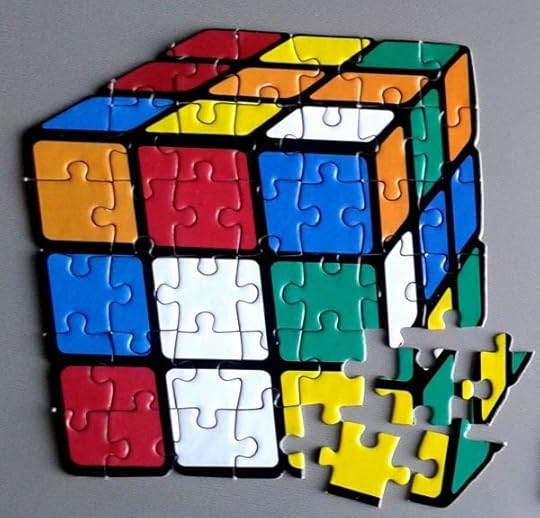
If leaving the office was hard to do, returning will be fraught with more difficulty.
Just like a champagne cork once removed expands and does not fit, it will be hard to put work back in the office.
Both, the decisions on what a “return to the office” means and how the decisions are made and conveyed are likely to have as great an impact on the culture and competitiveness of a firm in the next few years as any corporate or product strategy.
What a firm decides will at minimum impact its ability to a) attract and retain talent, b) cost structure, c) culture d) client and customer service levels and e) ability to innovate.
That’s all.
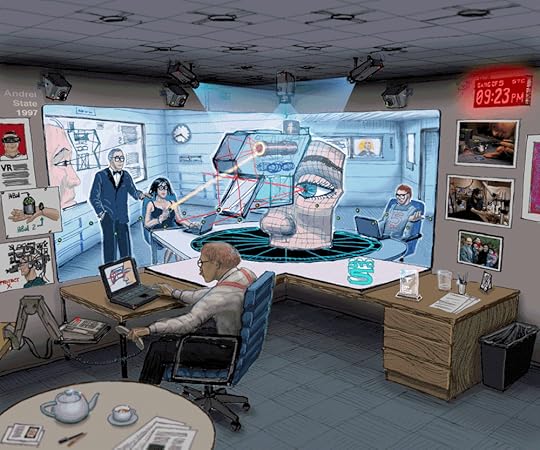 A way forward.
A way forward.After a first burst of non-nuanced, tone-deaf, future-fearing decision making about the end of Zoom meetings, the implication that those who hustle and care are the ones who want to return, and the laying down the law of how many days everyone needs to come back, the opposition of an empowered workforce alive to new possibilities has required re-thinking.
It is not going to be as easy as issuing blanket edicts.
Instead, it will be a jigsaw puzzle of different approaches for different people, different roles, different markets, and it will be a work in progress with many benefits and challenges.
The smartest firms and leaders are approaching these key decisions with a combination of these best principles
Communicating an understanding that going back to March 2020 makes ZERO sense unless one wants to go out of business.
Recognizing that hybrid is really a spectrum.
Sharing key principles and beliefs driving the thinking.
Following a software model of decision making.
 1) Communicating an understanding that going back to March 2020 makes no sense for most industries and firms.The past year has surprised everybody about the many myriad benefits of distributed work.
1) Communicating an understanding that going back to March 2020 makes no sense for most industries and firms.The past year has surprised everybody about the many myriad benefits of distributed work.For employers these have included, a) no significant drop in productivity, b) the ability to combine teams from all over the world to increase collaboration and work product, c) attract a far more diverse work force d) significant cost savings through reductions in travel, real estate and sometimes talent costs and e) progress towards their green goals as they reduce their carbon footprint.
For employees the benefits have included a) more flexibility to be with family and live-in different places, b) significant reduction in wasted time of having to travel to work or between Client meetings, c) ability to “see” senior management and have their “voice” heard, d) cost savings from reduced transport and other work-related costs and e) ability to have global demand for their time and a wider swath of opportunities.
While there have been significant benefits there have also been several challenges.
Employers worry about a) how to build a culture, on-board and train folks, b) how to maintain the creativity and relationship building that often needs the electrifying connection of people interacting in person or coming together in unplanned encounters and c) how to ensure a work life balance.
Employees want to get back with other folks to a) leave the narrow confines and loneliness of home, b) meet new people and build relationships and c) learn from the observations and interactions that only real world connections may make possible.
Most smart companies want to find a way to preserve as many benefits as possible of yesterday’s model of full time in the office and this past year’s world of working from home while solving for the drawbacks and challenges of each.
Thus, a key for every firm and leader is to stop using the words “going back” but “moving forward” and replace the mindset of “returning” to that of “starting anew”.
Any company starting fresh today with the technologies available today and soon available tomorrow (5G, Voice, AR, AI and Quantum based cloud computing) would never have a set up like companies did at the end of 2019 and hope to be compete from a cost, agility and talent attraction perspective.
 2) Recognizing hybrid is a spectrum.
2) Recognizing hybrid is a spectrum.There is now however a new emerging mindset that hybrid is not as simple as some days at the office and some days at home. Instead, one needs to think about how to put the pieces together of The Unbundled Workplace.
The Unbundled Workplace will combine four spaces:
a) Home: The safety, the flexibility, the ability to focus (especially if school resumes and children are not underfoot), and the cost and time savings of not having to travel to work will ensure that the home office will be foundational space that most people will spend significant time getting work done.
b) Distributed Work Pod: Either to enable gathering of teams or the option to work outside the home many companies will sub-lease space (e.g., We Work, Regus) near where clusters of their employees live. This will enable teamwork and getting away from home with a far more time and carbon friendly footprint.
c) Periodic Events/Experiences: Automattic (owners of WordPress and Tumblr) is a 1800 person global company where everyone works distributed but teams get together at a location of the team’s choice (often exotic ones) for a few days every quarter to collaborate, build relationships and learn from each other. Every year for one week the entire company gets together for education, inspiration, and bonding. Increasingly companies will create periodic events and experiences to offset the downsides of working in a distributed model which are difficulty in establishing and building relationships, culture sculpting and skill enhancement. There is no reason that this needs to be done in the offices left behind or a large capital expenditure needs to be allocated to re-configure spaces when far more impactful and cost-effective external options are available.
d) The Legacy Office (aka the Museum): The old central office or HQ will remain but will be significantly downsized and be more of a gathering space for some key training or client meetings, a roosting place for senior management and a museum of relics and artifacts that are the key to the story telling and culture of the company. Most employees will likely spend less than a third of their working year at this office.
 3) Sharing key principles and beliefs driving the thinking.
3) Sharing key principles and beliefs driving the thinking.Once companies remind people they are not trying to go back to the past and recognize that the future of work will incorporate a spectrum of locations they need to lay down certain beliefs and principles that they are basing future workspace plans on:
For instance:
We believe that in our creative industry it is key that people get together from time to time to collaborate, connect, and build on ideas. Thus, we are going to ask people to come to a common location x days a month.
Our legal and other constraints imply that our offices and employees need to work in these states. While we will work to expand these today, we need to work within these and other legal constraints.
We serve Clients and they will expect a certain level of service which will include a certain number of in-person interactions. We need to make sure we remain competitive versus others.
In certain markets people do not have the space to work from home and we need to ensure we have a space for them to work every day.
While we believe in flexibility, we believe we also need to have some firm guidelines and expectations for everybody to ensure fairness and clarity. For instance, we want to ensure that someone who works primarily remote does not get penalized regarding promotions versus someone who works in person.
The idea here is to treat everyone like adults and share both the first principles and constraints that one is working with. This will help people understand why certain decisions are being made.
Some basic rules and minimum expectations offer greater clarity than anything goes. Companies cannot be managed by commune. To have flexibility one needs to have a framework.
It is likely people will challenge and provide improvements to the framework. This is part of the process of indicating both clarity and listening.
 4) Following a software model of decision making.
4) Following a software model of decision making.There is never going to be a solution or solutions what will make everybody happy.
The jigsaw of return cannot be solved elegantly with every piece fitting but if people see the big picture you are trying to solve for, they are more likely to accept or resent less whatever decisions are being made.
How the decisions are made may be as important as what decisions are made.
The reality is no one has really done this before and there will be much learning along the way.
For instance, many companies are not going to have fixed spaces for teams to sit in but follow a hotel concept when one checks in and gets assigned a desk. On paper this sounds cool but if you think one click below it is questionable because if the reason you want people to be at work is to have teams work together but now, they can sit anywhere how is it better than they operating from home in the first place? Unless teams are in the office together and co-located to some degree one gets all the downsides of an office with none of the upsides of working from home!
We will all make mistakes like this (or maybe it is not a mistake). Therefore, consider a software release mindset with the first guidelines being an alpha followed by a beta and then a 1.0. Maybe in six to nine months into the process there will be a working process that then can be modified every six months or a year. Build in room for continuous learning and improvement.
Communicate that the return is a journey in which all of us travelers and the terrain are different than when everyone departed the office 15 months ago and we are all going to solve the puzzle together.
June 6, 2021
Becoming Innovative

Photography by Alex Burke
There are many definitions for what is innovative.
Often these definitions use the words “new” or “inventive” or “pioneering”.
I prefer this description of innovation: “fresh insightful connections”
Each of these three words; “fresh”, “insightful” and “connections” helps not only identify what is innovative but even more importantly, help one become innovative.

Photography by Alex Burke
InsightsInsight brings humanity and people into the innovation equation. Since much innovation is eventually experienced by people, it is critical to understand peoples unstated needs by watching, listening, and learning from their behavior.
After all, the best innovation solves a problem, finds a better way of doing something or brings tangibility to an unspoken gap.
Data is not insights, but insights can be gleaned from data by looking for patterns or idiosyncrasies.
Netflix uses co-relation a form of pattern finding to both recommend and greenlight new content.
Amazon uses idiosyncrasies about how people navigate its experience (sudden twists and turns in their transaction journey for one) to ask why?

Photography by Alex Burke
FreshFresh is a better word than new.
New, really is about time and the calendar and not about a way of thinking.
Fresh implies something different from the status quo. It is about a never seen or never thought about approach. Today, we see so many of the same images, and find so many of the same things all over the world, that we really wake up when we see or come across something fresh. So fresh that it fits no cliché and often requires its own language.
You remember the unusual, the moments when your travel fell out of a well-planned itinerary.
Fresh awakens and makes for tattoo moments that will be embed in us (and our customers.)

Photography by Alex Burke
ConnectionsConnections is a about the process where the human mind takes the same letters of the alphabet but puts them together in a unique way to create something that far more compelling than the parts that went before. All the components for innovation existed. The magic was in the connecting.
In the creativity of the connections, one unlocks the combination that unleashes innovation.
Google’s connected the insight that a more heavily referenced citation in an academic document should be ranked higher than a less cited one, with how pages linked to each other and gave birth to a fresh approach to search.
The iPad connects the insight that there was no computing device optimized for consumption and slouching (phones are for communication and walking while computers for creating and sitting), with a tactile, almost sensual approach to interacting with content to create a new object of lust.
In category after category, one sees these three factors in innovation. Fresh. Insightful. Connections.
So, begin by gleaning insights. Then put all the ideas one has down on paper that help solve unmet needs driven by these insights. Now shake and stir and step away and come back and see if you can connect things in fresh ways that still resonate with the insights.

Photography by Alex Burke
Three simple methods to drive innovation.a) Unbundling/Re-bundling: Break down your product or service or customer experience or journey into its component parts and ask what parts can be eliminated or how can they be re-configured or re-bundled.
A bank removed multiple steps from the process of opening an account by breaking down the steps and then eliminating some that were duplicative or no longer relevant, digitizing others, importing data into the process rather than needing people to fill in forms or bring data with them, and making the process available 24X7.
Unilever outsold Procter and Gamble shampoos in India by recognizing that instead of selling many head washes at a time in a bottle they should sell a single wash in a sachet that was more affordable to the millions who earn daily wages and do not have the money to buy an entire bottle.
Airbnb will soon launch a new threat to landlords and the legacy rituals of renting by asking why a need for a security deposit is there and why should leases be yearlong? This insight came from the fact that almost a quarter of their stays were over a month long during the pandemic. Why own a second home when you can have thousands of second homes available for a month or three months everywhere in the world without any of the fixed costs, maintenance hassles and the dreary ritual of returning to the same place?
b) Blank Sheet of Paper with a Red Team/Blue Team: Create two teams. One that works to find ways to enhance your current product or service based on insights, and a second whose only goal is to vanquish, destroy and put your brand out of business. Both teams are free to use all legal and scientifically available tools with some economic constraints like the need to break even within x months or years.
Often, the attacking team ends up being more innovative because of two keys to innovation which are a ) no anchor of legacy structure or thinking and b) refusing to accept anything except the law and science as a given.
c) Diversity of Voices: A key to fresh insightful connections is to have different people with different backgrounds and experiences working together in an environment where every voice is heard. Diversity of ethnicity, gender and expertise are all key but even more critical is a culture where people can speak up, challenge the status quo, and take leaps of imagination. This requires both a diverse work force but also a culture that is supportive and provides trampolines of trust for the hesitant or questioning voices and the daring risk takers.
To be innovative think “fresh insightful connections” and then decompose and recompose your product, service or experience while suppressing legacy thinking and constraints.
You will be surprised at how many ideas you will come up with.
Then the key is to implement the good ideas.
Because if you do not someone will.
Becoming Innovation

Photography by Alex Burke
There are many definitions for what is innovative.
Often these definitions use the words “new” or “inventive” or “pioneering”.
I prefer this description of innovation: “fresh insightful connections”
Each of these three words; “fresh”, “insightful” and “connections” helps not only identify what is innovative but even more importantly, help one become innovative.

Photography by Alex Burke
InsightsInsight brings humanity and people into the innovation equation. Since much innovation is eventually experienced by people, it is critical to understand peoples unstated needs by watching, listening, and learning from their behavior.
After all, the best innovation solves a problem, finds a better way of doing something or brings tangibility to an unspoken gap.
Data is not insights, but insights can be gleaned from data by looking for patterns or idiosyncrasies.
Netflix uses co-relation a form of pattern finding to both recommend and greenlight new content.
Amazon uses idiosyncrasies about how people navigate its experience (sudden twists and turns in their transaction journey for one) to ask why?

Photography by Alex Burke
FreshFresh is a better word than new.
New, really is about time and the calendar and not about a way of thinking.
Fresh implies something different from the status quo. It is about a never seen or never thought about approach. Today, we see so many of the same images, and find so many of the same things all over the world, that we really wake up when we see or come across something fresh. So fresh that it fits no cliché and often requires its own language.
You remember the unusual, the moments when your travel fell out of a well-planned itinerary.
Fresh awakens and makes for tattoo moments that will be embed in us (and our customers.)

Photography by Alex Burke
ConnectionsConnections is a about the process where the human mind takes the same letters of the alphabet but puts them together in a unique way to create something that far more compelling than the parts that went before. All the components for innovation existed. The magic was in the connecting.
In the creativity of the connections, one unlocks the combination that unleashes innovation.
Google’s connected the insight that a more heavily referenced citation in an academic document should be ranked higher than a less cited one, with how pages linked to each other and gave birth to a fresh approach to search.
The iPad connects the insight that there was no computing device optimized for consumption and slouching (phones are for communication and walking while computers for creating and sitting), with a tactile, almost sensual approach to interacting with content to create a new object of lust.
In category after category, one sees these three factors in innovation. Fresh. Insightful. Connections.
So, begin by gleaning insights. Then put all the ideas one has down on paper that help solve unmet needs driven by these insights. Now shake and stir and step away and come back and see if you can connect things in fresh ways that still resonate with the insights.

Photography by Alex Burke
Three simple methods to drive innovation.a) Unbundling/Re-bundling: Break down your product or service or customer experience or journey into its component parts and ask what parts can be eliminated or how can they be re-configured or re-bundled.
A bank removed multiple steps from the process of opening an account by breaking down the steps and then eliminating some that were duplicative or no longer relevant, digitizing others, importing data into the process rather than needing people to fill in forms or bring data with them, and making the process available 24X7.
Unilever outsold Procter and Gamble shampoos in India by recognizing that instead of selling many head washes at a time in a bottle they should sell a single wash in a sachet that was more affordable to the millions who earn daily wages and do not have the money to buy an entire bottle.
Airbnb will soon launch a new threat to landlords and the legacy rituals of renting by asking why a need for a security deposit is there and why should leases be yearlong? This insight came from the fact that almost a quarter of their stays were over a month long during the pandemic. Why own a second home when you can have thousands of second homes available for a month or three months everywhere in the world without any of the fixed costs, maintenance hassles and the dreary ritual of returning to the same place?
b) Blank Sheet of Paper with a Red Team/Blue Team: Create two teams. One that works to find ways to enhance your current product or service based on insights, and a second whose only goal is to vanquish, destroy and put your brand out of business. Both teams are free to use all legal and scientifically available tools with some economic constraints like the need to break even within x months or years.
Often, the attacking team ends up being more innovative because of two keys to innovation which are a ) no anchor of legacy structure or thinking and b) refusing to accept anything except the law and science as a given.
c) Diversity of Voices: A key to fresh insightful connections is to have different people with different backgrounds and experiences working together in an environment where every voice is heard. Diversity of ethnicity, gender and expertise are all key but even more critical is a culture where people can speak up, challenge the status quo, and take leaps of imagination. This requires both a diverse work force but also a culture that is supportive and provides trampolines of trust for the hesitant or questioning voices and the daring risk takers.
To be innovative think “fresh insightful connections” and then decompose and recompose your product, service or experience while suppressing legacy thinking and constraints.
You will be surprised at how many ideas you will come up with.
Then the key is to implement the good ideas.
Because if you do not someone will.
May 30, 2021
Leader = You
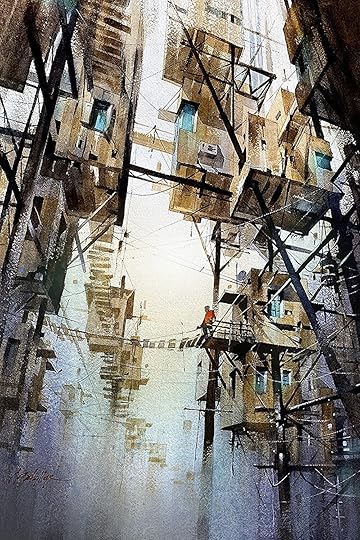
Watercolor by Thomas Schaller
Every single person can be a leader.
Leader is not a title that is bestowed but a role that is lived.
Leader does not mean boss.
One can be a leader with zero minions or reporting staff.
People are assigned to bosses.
They follow leaders.
The six traits of leaders.Everyone can learn and build the traits of a leader if they wish to and are disciplined about it. Becoming a leader does not entail anyone else allowing it, awarding it or being able to take it away.
The six traits are 1) Competence 2) Time Management 3) Integrity 4) Empathy 5) Vulnerability and 6) Inspiration
They are all internally driven and with discipline and time can be honed and sculpted.
So, if you want to be a leader you can.
Right now. Right away.

Watercolor by Thomas Schaller
CompetenceTo be a leader in any field, at any level, you need to build proficiency.You need to learn your craft, hone your skills, continuously improve, and remain relevant and up to date.
Too many “leaders” slip into irrelevance by letting their skills atrophy. Today due to the rapid change in demography and technology the half-life of whatever one has learned rapidly decays and the fuel tank of competence needs to be continuously filled. Organizations fail to keep up when their people fail to keep updated and re-orient themselves as the compass of the future calls for a new navigation path.
We are all blessed with the ability to learn both independently using the world of resources online but also most organizations are now investing in training and skill upgrading. In addition to these avenues one can build skills by volunteering for new assignments or switching jobs.
The day we stop learning our leadership capabilities stop growing and may begin to die.

Watercolor by Thomas Schaller
Time Management.The three “time” skills that one needs to build to become a leader are that of a) bi-focal focus, b) delegation/teamwork and c) zero based time budgeting.
Leaders learn to have bi-focal focus by recognizing the difference between the urgent (which often must be done to live another day) and the important (what needs to be done to ensure long term success). They put time on their calendars every week to ensure that there is time to focus on the strategically important or they will be lost forever in a swirl of tactical urgency. Take time every week to think of where you want to be or your company to be six or twelve or twenty-four months in the future and what you may need to get there.
To be a leader requires one to work with teams so one can focus on what one does best, leverage and learn from others who do things best and where one can delegate tasks that you have already mastered or which someone can do much better than you. Being “irreplaceable” or “nobody can do this as good as me” ensures that you will not grow and people around you will not grow.
We all have financial budgets, and we have time budgets. When you say yes to a new request ask yourself or the person who has given it to you what you can stop doing. Or one ends up doing a lot of things in a half-baked way and corners get cut which can cost the firm and you in time and trouble. This is a formula for poor results, burn out and a flushed and flustered demeanor which is not the look of a leader.

Watercolor by Thomas Schaller
Integrity.Trust is speed.
Trusted people rarely have the need to pull out multi-paged power point decks to convince their teammates, bosses, and clients about what they are recommending.
If one is not trusted it is hard to be a leader.
Trust can be earned by placing a primacy on facts, being clear about one’s intentions and transparent about how one is making decisions.
To be trusted one must face reality and deal with facts. Facts are stubborn things. Reality has a habit of breaking in. Truth matters. If one does not begin with these fundamentals, it is very hard for people to believe you. You may be able to mislead them for a time but once found out you may never recover. Looking reality in its face is what a leader does versus imaginative mind gaming and selling of hallucinatory fantasies. Sooner or later people wake up.
Be clear about your intentions. What are you trying to do and what do you hope to gain? This allows everyone to understand your goals and they may have better ideas of achieving them and neither you or they waste time in trying to figure out what you are up to or why they are being recruited to a cause.
Often decisions are made that people do not agree with. But they are much easier to accept if they are built on a foundation of facts, a clarity of intentions and a transparency on the thought process that led to the decision. There is no confusion about a “black box” or some demonic plan.
Everyone can be known for integrity by beginning with facts, stating intention and being transparent about their process.
In time this builds trust.
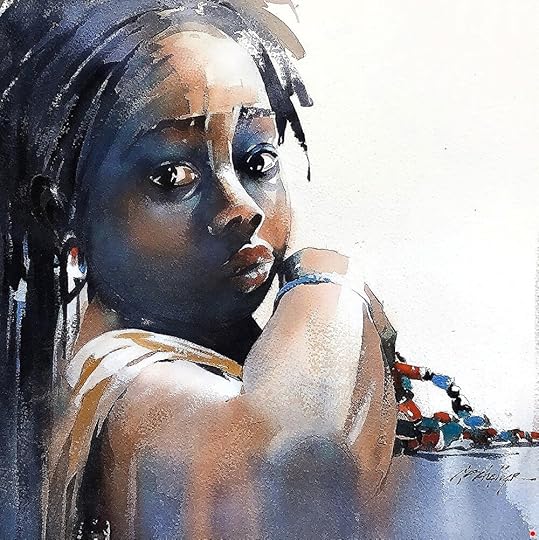
Watercolor by Thomas Schaller
Empathy.Leaders bring about change and achieve goals by bringing other people along with them.To do so it is key to understand where people are coming from. What their fears, concerns, challenges as well as hopes, desires and dreams are.
A simple way is to ask four questions.
a) What is on your mind?
b) What else?
c) If you were not doing this, what would you be doing or how could things be better?
d) How can I help?
These questions allow both facts and emotions to emerge and a real conversation to ensue which is key to empathy.
After all being a leader is as much about other people as it is about you.
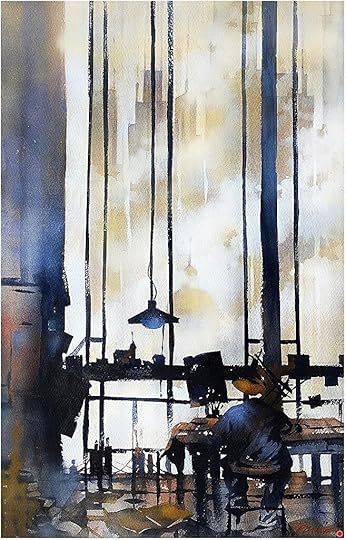
Watercolor by Thomas Schaller
Vulnerability.Vulnerability is strength and not a weakness.
By speaking about things, one worries about, one reveals humanity and comes off as believable.
It makes other people step up to try to help and offset your concerns or lack of competence with their or other people’s complimentary skills.
But as importantly it gives people the room to also speak up and point out other weaknesses that may exist not just with you but on projects that you are working on.
Leadership is not being the all-knowing, all-seeing, always-right demi-god but a human with good intentions, discipline and focus trying to figure out the best way forward. Does anyone truly believe the bombastic, bullying, blow hard? We may fear them, but do we follow them? No way Jose!
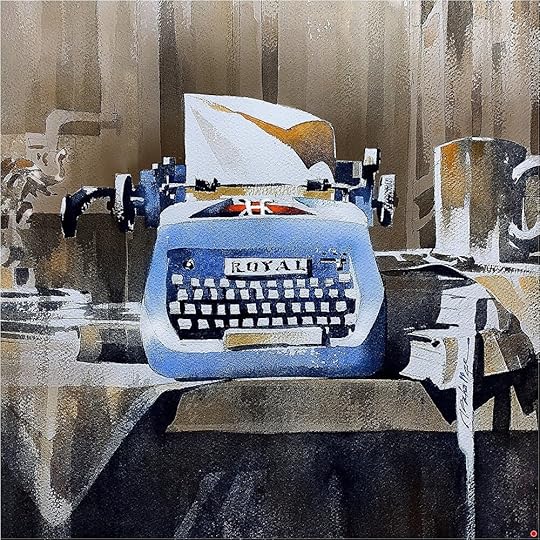
Watercolor by Thomas Schaller
Inspiration.As Blaise Pascal wrote “We choose with our hearts, and we use numbers to justify what we did”.
After the facts and the data, after the PowerPoints and the spreadsheets we often remain unconvinced, dis-believing, and hesitant.
Yes, we are living in a data driven, silicon based, computing world but all of us are story driven, carbon based, feeling individuals!
Joan Didion wrote “we tell ourselves stories in order to live” and thus storytelling and examples bring a vivid reality to get people to rise to another level.
Learn to communicate through words, stories, art, and example.
It will take you and everyone else to another level.



